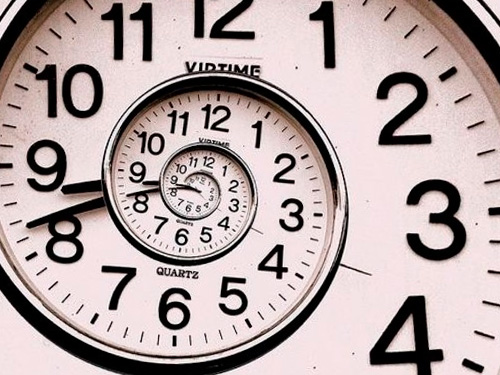To tell time by the sun
First, you need to pay attention to the position of the sun. If you are in the Northern hemisphere should face South, if the South face to the North. If there is no compass to determine the part of the world in the following way: the sun rises in the East and sets in the West. If you are facing South, East is to the left, if you are facing North, East is to the right.
If the sun is in the sky in the center, then it is 12 o'clock noon. Possible deviations during the hour and a half, it all depends on your position relative to your time zone.
If the sun is not the center of the sky, to determine the time it will be necessary to make some calculations:
- The morning sun is on the Eastern edge of the sky, and at noon on the West. Need to mentally divide the sky into two equal parts, separator parts is the Zenith, the highest point in the sky.
- Now you have to understand how many hours there are between sunrise and sunset. The number will depend on the location and time of year. The days are shorter in the winter - 10 hours somewhere in the summer long - 14 hours. Fall and spring daylight is about 12 hours.
- Further, it is necessary to divide the trajectory of the sun on the segments. The easiest way to visualize the arc that the sun moves from East to West, appearing and disappearing on the horizon. Mental arc divide by the number of segments equal to the number of hours of daylight. For example, if a day consists of 12 hours, 6 of them are located in the Eastern part of the arc, and 6 in the West!
- If it is difficult to divide the arc into parts, you can use fists or hand (or by some improvised means). Fingering fists, count the number of fists from the beginning of the arc to the Zenith. This figure will be a half day. If you counted 9 fists, and you know what the day consists of 12 hours, respectively, then fists 9 = 6 hours. To see how much each knuckle is time, divide the hours into fists. So, 6 hours is divided by 9 the kulaks, it turns out 2/3 (about 40 minutes).
- Determine what segment of the arc is the sun (one period is one hour). The number of segments from the Eastern beginning of the arc to the sun and it's time. The residue from the sun to the Western end of the arc is hours remaining until sunset. At first it may be a little complicated but with time you will learn how to tell time without much effort.
To tell time on the moon
Pay attention to the moon. If the moon is full, the method will work similar to the way “to tell time by the sun”. If the moon is not visible (new moon), then this option to use will not work.
The moon present in the form of a true circle, divide it into vertical strips. The number of strips is equal to the number of night hours. The first hour is the first strip on the right, and the last hour is the last bar to the left. The number of hours will depend on location and time of year.
It is necessary to consider from right to left. Define a line on the moon that crosses the boundary between its dark and light parts. Count from right to left the number of this line. If the moon moves from bright parts to dark, the band crossing will understand, when will the moon sets (sets in the West). The number of the stripes transition from dark parts to light will tell you when will the moon rise (it will appear in the East).
Now define, where is the moon in the sky. Divide as in method with the sun, an imaginary arc on the segments. For example, night lasts 12 hours, then do 12 segments. Now there are two options:
- If the rise time of the moon, count how many she has already passed the segment. Add to this number the time of moonrise and you will get the current time.
- If it is determined the time at which the moon, count how many she had cuts to his time in the West. Then subtract from this number the time at which the moon and get the current time.
To tell time by the stars
Determine where in the sky is the constellation the Big dipper. This can be done only being in the Northern hemisphere, cloudless sky. In the summer it is closer to the horizon.
Now it is necessary to establish the approximate time. Two stars of the Big dipper are in line with the Polar Star. This line will serve as the arrows. Polar star will perform a hypothetical center hours. Mark 6 hours is hours bottom and 12 on top. Other timestamps are also dorisovyvaet imagination. It shows an imaginary arrow, if you look to the North? For example, 2:30 - it will be a rough time.
Next you need to add to this figure of 1 hour for every month after March 7. That is, if on the calendar may 7, we must add another 2 hours. You will get 4:30. To clarify the figure, it is necessary to add or subtract two minutes for each day before or after 7 March. If today is February 2, is exactly 1 month and 5 days until March 7. Hence, it is necessary to subtract 1 hour and 10 minutes from the estimated time.
Date March 7, when timing is important because on this day the star clock shows midnight - exactly 12 hours. Therefore, this reference date is easy to adjust the time.
